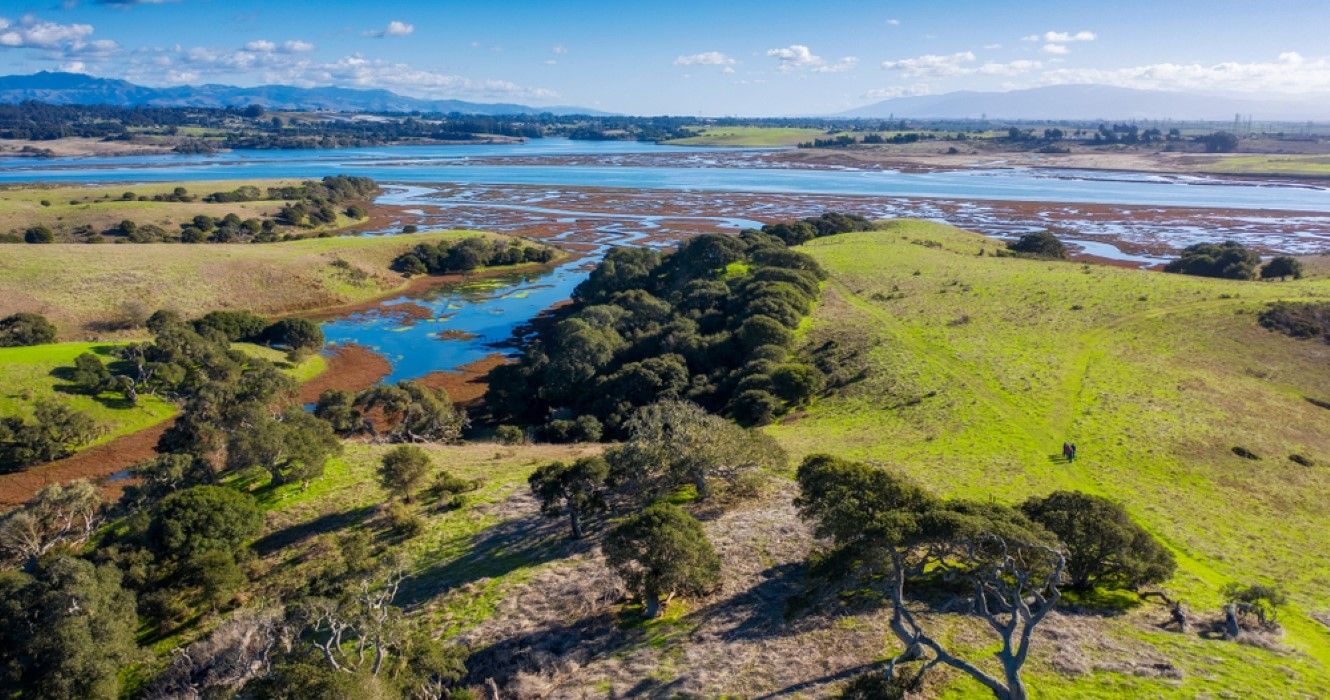Quick Links
California is undoubtedly home to many national parks and the largest estuary, notably Elkhorn Slough, a seven-mile-long tidal slough located on Monterey Bay in California. Visitors will likely find this estuary teeming with an abundance of wildlife. It is here where Carneros Creek (which is the principal freshwater source) flows into Elkhorn Slough. Visitors who wish to digital detox will be able to connect with nature, for instance, getting an up-close view of the wildlife, including sea otters, sea lions, egrets, brown pelicans, and others.
With its unique biodiversity that comprises over 340 species of birds and the fact that it is home to the largest tract of tidal salt marsh in California, Elkhorn Slough has been designated as a protected Ramsar site. The Ramsar sites are wetland areas designated to be of great international importance under the Ramsar Convention (The Convention on Wetlands). Elkhorn Slough National Estuarine Research Reserve and the Elkhorn Slough Foundation work together with the local government and community agencies to conserve the biological diversity here.
Why Elkhorn Slough Is Important?
There are many features that make Elkhorn Slough a crucial site for nature conservation. Firstly its location right on the central coast of California makes it a key linkage between land and the sea. This particular site acts as a natural filter, whereby impurities are removed from the water before it flows into the ocean. Another point is that Elkhorn Slough is a carbon sequester; that is, it helps remove and store greenhouse gases from our planet’s atmosphere to slow the onset of global warming.
In addition to serving as a natural habitat for flora and fauna of the region - think diverse fish species, aquatic birds, and marine invertebrates, the wetland also contributes to recycling nutrients and providing food to the animals living there.
Unfortunately, such type of site is vulnerable to unsustainable farming practices and developmental work that cause a real threat to the native habitats and the estuary as a whole. It has been reported that there has been a high rate of habitat loss that goes about 75 to 90 percent, and as a result, there are now many endangered species.
Fauna And Flora Of Elkhorn Slough
It is estimated that there are over 700 plant, animal, and bird species living in the Elkhorn Slough and a high population of southern sea otters. Sea otters are known to be among the smallest mammal on earth, having dense fur. They can live up to 20 years, and their weight can reach up to 70 lbs. The slough also hosts the endangered Santa Cruz long-toed salamander, red-legged frog, harbor seals, eelgrass, and long-jaw mudsuckers. Among wildflowers, there are the yellow mariposa lily and Calochortus luteus.
Birdwatchers will be able to see a myriad of migratory bird species during the spring and fall season at the estuary. The sanctuary has five miles of trails that wind down through several types of wild habitats consisting of oak woodlands, a salt marsh, freshwater ponds, and upland grassland, where there are a variety of birds that nest in these areas. Some birds include the white-tailed kite, barn owl, red-shouldered hawk, and oak titmouse. Volunteers from the conservation organization generally carry out surveys to keep track of the bird population in the area.
Another interesting aquatic animal to spot when visiting the estuary is the leopard sharks which live in the muddy water of the slough. The habitat is best suited for these leopard sharks, which are adapted to live in this type of environment. They can detect their prey by using their bioelectrical sensors. There are also different types of rays that live in the estuary. Visitors will be more likely to spot Bat Ray, Thornback Ray, and Round Stingrays.
What To Do At Elkhorn Slough?
Visiting Elkhorn Slough is free, and there are many eco-activities that nature adventurers can indulge in. The popular activity is to kayak from the Moss Landing Harbor District Launch Ramp tucked at the North Harbor. Kayakers can kayak in the slough area, which is calm, but the harbor area can be challenging with peak tidal currents reaching 3 knots.
The slough has five miles of trails where visitors can hike and bird watch at designated areas. In addition, there are various opportunities to see animals such as sea lions, seals, and egrets. Diving, swimming, and snorkeling are also allowed.
Entrance: Free
Do’s:
- Visitors are advised to keep a distance of at least 100 feet between them and the wildlife.
Don'ts:
- Visitors are advised not to step onto the mudflats or marshes.
- It is important to keep a distance of about 200 feet while paralleling resting seals.
- Try to avoid shouting or waving and pointing.
How To Get To Elkhorn Slough?
Elkhorn Slough is located between Santa Cruz and Monterey. It can be reached by Highway 1 north of Moss Landing. Then turn right on Dolan Road and eventually to the left onto Elkhorn Road. Find the sanctuary on the left side at 1700 Elkhorn Road.

